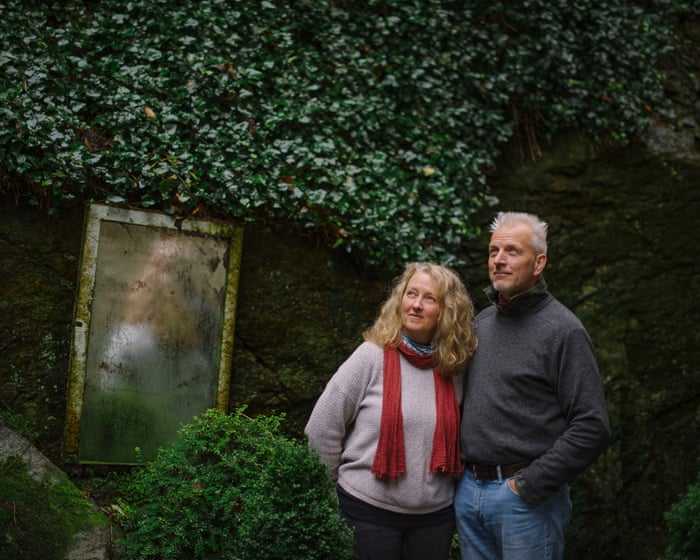When The Salt Path was published in 2018, it became a publishing sensation, eventually selling over two million copies worldwide. Even those who haven’t read it likely know the story by now: the book follows Raynor Winn and her husband Moth as they embark on a life-changing journey along the South West Coast Path after losing their home to financial ruin and receiving Moth’s devastating diagnosis of an incurable neurological disorder. Winn went on to write two more bestselling books in a similar vein—The Wild Silence and Landlines—and earlier this year, The Salt Path was adapted into a film starring Gillian Anderson and Jason Isaacs. What began as a debut memoir had become the dream of every writer, editor, and bookseller: a bestselling brand with spin-off potential.
But The Salt Path wasn’t the first nature memoir to capture readers’ hearts. In 2012, Cheryl Strayed’s Wild chronicled her solo hike across America’s west coast following her mother’s death and the collapse of her marriage. The book soared up the bestseller lists and was adapted into a film starring Reese Witherspoon two years later. That same year, Helen Macdonald’s H Is for Hawk became an unexpected hit, blending memoir with nature writing as Macdonald trained a goshawk while grieving her father’s death. In 2016, Amy Liptrot’s The Outrun recounted her return to Orkney’s rugged landscapes to recover from addiction—a story recently adapted for film with Saoirse Ronan in the lead. And last year, foreign policy adviser Chloe Dalton’s Raising Hare explored her move to the countryside and the healing she found in rescuing a young hare.
Clearly, there’s a thriving market for books that weave together nature writing, personal memoir, and a form of self-help where troubled individuals—or, in The Salt Path’s case, a couple—find solace, strength, and even redemption by stepping away from society and immersing themselves in the wild. It’s easy to see why these stories resonate, but what do they say about our relationship with nature? And could the controversy surrounding The Salt Path affect the genre?
Of course, no memoir can claim absolute truth—memory, perception, and personal bias always play a role. But the two main criticisms leveled at Winn are that she allegedly embezzled money from an employer before the events of The Salt Path and that she exaggerated the severity of Moth’s illness. Winn denies both claims, particularly stressing that neither she nor Moth ever suggested their journey cured his condition.
Still, The Salt Path struck a chord by addressing deep-seated fears about losing home and health, offering instead a story of resilience. For Melissa Harrison, an author of fiction and nature writing, these books act as “proxies through which we connect with the natural world—something many of us lack the time or inclination to do in real life.” Reading about someone else’s deep immersion in nature gives us the sense of participating in an environment that often feels distant. “That mediated experience is reassuring,” Harrison says. “It tells us we still have the capacity for profound feeling, and that someday, when life’s obstacles fade, we can rediscover our bond with nature—likely left behind in adolescence—and find meaning again.”Here’s the rewritten text in fluent, natural English while preserving the original meaning:
—
“Belonging again.”
Helen Macdonald, author of H is for Hawk, reflects: “We pour our deepest human emotions into nature—almost forcing them upon it.”
However, Harrison offers a word of caution about the “healing narrative” or “quest structure” common in nature writing. While she admires authors like Dalton, she notes, “For every standout book like Raising Hare, there are five others where it feels like the author simply wanted to write a nature memoir and scrambled for an experience to shape it. Readers deserve better—and publishers should aim higher.”
Harrison isn’t the only writer to raise concerns about publishers’ responsibilities. The discussion following The Salt Path has included criticism of Penguin Random House for what some see as a failure to fact-check Winn’s manuscript. While expecting editors to act as detectives—interviewing an author’s acquaintances to verify details—may be unrealistic, there’s a valid concern that the industry chases trends, flooding the market with repetitive or derivative work once a genre gains popularity.
Mo Hafeez, a commissioning editor at Faber, acknowledges that nature writing has become somewhat homogenized, especially after the pandemic. “With people stuck at home, many turned to nature,” he says. “This led to a surge in nature writing—not just from seasoned naturalists or academics, but from everyday people. That democratization was beautiful, but eventually, the market became oversaturated.”
The challenge, Hafeez believes, is to move beyond predictable nature memoirs and embrace fresh perspectives. He cites poet Jason Allen-Paisant’s exploration of rural landscapes in the UK and Jamaica as an example.
Many writers within the genre follow their own vision rather than market trends. Noreen Masud’s A Flat Place examines trauma through landscapes; Polly Atkin blends biography and memoir in Some of Us Just Fall, reflecting on chronic illness; and Natasha Carthew, founder of the Nature Writing Prize for working-class writers, brings her own unique voice.
These authors may not match Raynor Winn’s sales, but bestsellers like The Salt Path succeed by combining strong storytelling, timing, and cultural relevance. Winn’s tale of resilience amid homelessness and illness resonated deeply—though criticism over her portrayal of her husband’s health has sparked controversy.
Amy Liptrot, who returned to her family’s Orkney sheep farm to recover from addiction, represents another facet of the genre.
“What I’m interested in,” says Rachel Hewitt, author of In Her Nature,
—
(Note: The text cuts off mid-sentence, so I’ve preserved the incomplete thought.)The use of physical illness as a morally straightforward theme serves as a kind of shield, doesn’t it? She argues that the complete story—whatever its truth—would have made for a richer narrative. But the polished version is easier to market: a simple journey from sickness to recovery, from homelessness to finding a new sense of home. These tidy arcs clearly resonate with publishers and readers alike.
Writing about illness is deeply personal and delicate, both for the writer and the reader. Susan Sontag warned of its pitfalls in Illness as Metaphor, while Hilary Mantel cautioned that illness strips you down to an “authentic” self—one you might not want to face. “Too much is claimed for authenticity,” she wrote. “Painfully, we learn to live in the world, and to be false.”
Hewitt suggests that publishers often smooth over complexity, favoring straightforward narratives. A woman in her 50s, with a layered past, challenges that simplicity. Now considering writing about grief as a widow, Hewitt has grown wary of the neat, linear stories common in nature writing—ones that don’t reflect real human experience.
Nic Wilson, author of Land Beneath the Waves, sees this trend as part of broader societal attitudes toward nature—often transactional. She initially hesitated to write about her family history and chronic illness, fearing her story was too ordinary or that memory would fail her.
“Even books marketed as healing narratives are more complex than they appear,” she says. “But the trope simplifies things, setting expectations that limit diversity in memoir—especially nature memoir. More voices mean more experiences are validated.”
These discussions emphasize seeing nature not as a resource but as a complex, interconnected web of environments. “Let’s be honest, it’s full of death,” says James Rebanks, whose latest memoir, The Place of Tides, explores time spent with a wild duck farmer in Norway. “Nature isn’t just butterflies and healing. It’s also loneliness, silence, and decay. My last book tried to show that—nature can depress you. It’s falling apart. I find it more compelling when it reflects bigger issues: politics, economics, the state of the world.”
Rebanks, who admires Tolstoy and Wendell Berry, embraces the contradictions in nature writing. Like the best authors in the genre, he understands that we can’t separate ourselves from the stories we tell.Whether in fiction or nonfiction, Helen Macdonald—author of the award-winning H Is for Hawk, now adapted into a film starring Claire Foy and Brendan Gleeson—understands the assumptions we bring to nature writing.
“Nature is often seen as a space untouched by human influence, where universal truths exist independently of us,” Macdonald says. “But that’s nonsense. It’s not true. We project our own meanings onto nature, forcing our ideas onto it, then use those interpretations to validate our beliefs. That’s what nature writing does constantly.”
Macdonald points to a literary tradition that helps explain both the success of The Salt Path and the backlash over its factual liberties. “Tramp” or “vagabonding” literature, popular in the 19th and 20th centuries, was inherently individualistic and often fictionalized. It included voices from society’s margins, as well as writers like George Orwell, who immersed themselves in hardship to critique social structures. This stands in stark contrast to modern memoirs that frame nature as a source of healing.
So is the genre now in crisis? Is there still space for wilderness journeys with redemptive arcs? Jessica Lee, author and founder of The Willowherb Review (a platform for writers of color, active from 2018 to 2022), believes the controversy around The Salt Path opens a chance to rethink nature writing.
“If we want to write about the natural world, we can’t erase ourselves,” Lee says. “We’re the storytellers. But we can let the world shape our narratives.” That means rejecting tidy, linear progress in favor of cyclical, messy truths. “The personal can be the entry point, but we must actively move beyond it once the door is open.”
The scrutiny of a bestseller like The Salt Path also reveals the challenges of nature publishing—where experimental, complex work persists but often lacks the support given to more marketable stories. It’s a sobering reality, yet unlikely to stop those determined to document our endangered world, capturing both its beauty and its fragility.




